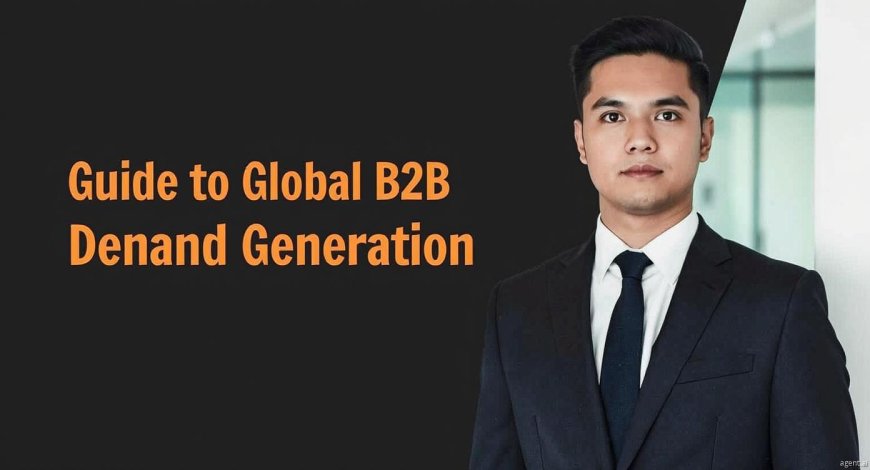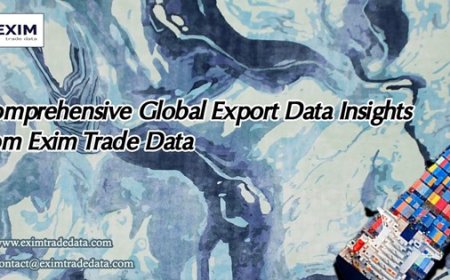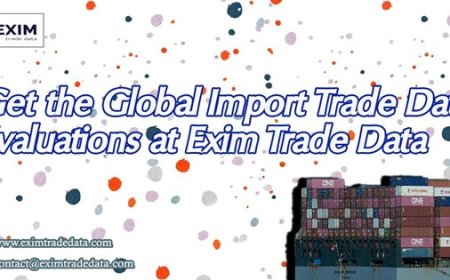Navigating Cross-Border Growth with Global B2B Demand Generation

In the fast-moving world of global B2B demand generation, assumptions dont drive resultsdata does. With multiple touchpoints, platforms, and international markets to manage, the only way to sustain success is through a data-driven approach. This means leveraging performance metrics, behavioral insights, and predictive analytics to fine-tune campaigns, identify what works, and uncover new opportunities across regions.
Global B2B demand generation efforts can easily become complex and fragmented. But by embedding optimization into every campaign, strategy, and process, B2B marketers can ensure scalability, efficiency, and measurable ROI.
Why Optimization Is Non-Negotiable in Global Programs
The stakes are high in global B2B demand generation. Marketers face wide variances in buyer behavior, language, regulatory requirements, and media preferences across countries. A campaign that performs well in North America may underperform in APAC without strategic optimization.
Moreover, budgets are often spread thin across multiple regions, requiring maximum efficiency and impact per dollar. Optimization allows marketing teams to:
- Improve targeting accuracy
- Reduce cost per lead (CPL)
- Enhance engagement
- Accelerate sales velocity
- Align content with audience intent
Without continual refinement, global B2B demand generation strategies risk becoming outdated or ineffectiveespecially in volatile markets.
Defining KPIs That Reflect Global Goals
Before optimizing any campaign, global B2B demand generation teams must define the right KPIs. These should reflect both universal goals and region-specific nuances.
Some essential KPIs include:
- Lead volume by region
- Cost per MQL (Marketing Qualified Lead)
- Lead-to-pipeline and lead-to-revenue ratios
- Content engagement by country or language
- Landing page conversion rates per market
Tracking these metrics enables marketers to assess where campaigns are over- or under-performing and identify bottlenecks in the global demand generation process.
Centralized Data, Decentralized Insights
Data centralization is critical in global B2B demand generation. All campaign datawhether from email, social, webinars, paid media, or syndicationshould feed into a unified analytics platform. This allows for global visibility while also enabling localized insights.
However, interpretation and action should be decentralized. Regional marketing teams understand cultural preferences, economic conditions, and buyer behavior better than centralized teams. Provide them with the tools and dashboards to analyze performance, test hypotheses, and make data-informed decisions.
This combination of centralized data infrastructure and localized intelligence creates a powerful optimization loop in global B2B demand generation programs.
A/B Testing Across Channels and Regions
One of the most effective ways to optimize is through structured A/B testing. Whether you're experimenting with subject lines in email campaigns, CTA placement on landing pages, or ad creative in LinkedIn campaigns, testing reveals what truly resonates with your audience.
Global B2B demand generation teams should:
- Run tests in parallel across multiple regions
- Document learnings by geography
- Adjust content and tactics based on statistical results
For example, an email with a benefit-driven subject line may outperform a feature-based one in the U.S., while in Europe, long-form emails may deliver better click-through rates. The key is to test everything, everywhere, and iterate often.
Optimizing Lead Scoring Models
Lead scoring is essential for prioritizing global leads. But a static, one-size-fits-all model doesnt work in international markets. Lead behavior varies across cultures. For instance, a webinar registration may indicate high intent in North America but not in Southeast Asia, where event attendance is more passive.
Global B2B demand generation optimization requires flexible lead scoring models that:
- Incorporate regional behaviors and engagement thresholds
- Adjust weightage of actions based on intent signals
- Use AI to refine scores over time based on real conversion data
Regularly recalibrating lead scoring ensures sales teams are focusing on the right accountsimproving efficiency and pipeline results globally.
To know more visit us @ https://acceligize.com/
Personalizing Based on Performance Insights
Personalization improves engagementbut only if its based on real insights. Instead of guessing what content to deliver to which audience, marketers should analyze performance trends.
Use your analytics to answer:
- Which content types drive the most downloads in each region?
- What industries respond best to certain offers?
- Where do prospects drop off in the buyer journey?
Armed with this data, global B2B demand generation teams can create dynamic content hubs, localized nurture sequences, and persona-specific outreach tailored to real-world behaviorsnot assumptions.
Utilizing Predictive Analytics for Smarter Campaigns
Modern marketing tools can use predictive analytics to guide global B2B demand generation strategies. These AI-driven systems analyze historical campaign performance, account behavior, and external data to forecast which leads are most likely to convert.
Marketers can use these insights to:
- Prioritize high-propensity accounts by region
- Identify optimal times to engage based on local buying cycles
- Determine which content and channels are likely to work best for specific personas
Predictive models not only improve campaign efficiency but also help teams plan future investments more strategically across international markets.
Reducing Wasted Spend Through Attribution Modeling
A major challenge in global B2B demand generation is understanding which channels contribute most to pipeline. Without clear attribution, marketers may continue investing in underperforming tactics.
Multi-touch attribution modelsfirst-touch, last-touch, linear, time-decayallow teams to assign value to each touchpoint along the customer journey. This helps answer key questions like:
- Did that LinkedIn ad assist in conversion, or was the webinar the real driver?
- Are email nurtures or content syndication more effective in Asia?
Armed with attribution insights, global teams can cut low-ROI campaigns and reallocate budgets to high-performing activities in each market.
Monitoring Local Compliance and Data Regulations
Optimization isnt just about engagement and conversion. It also includes maintaining compliance with local regulations. In global B2B demand generation, data privacy laws vary widelyGDPR in Europe, CCPA in California, LGPD in Brazil, and others.
Monitoring opt-in rates, data source quality, and bounce rates per region can help identify issues early. Optimization in this context means refining data collection processes, revisiting consent language, and ensuring regional complianceso your campaigns dont suffer from legal or deliverability issues.
Building a Culture of Continuous Improvement
The most successful global B2B demand generation teams treat optimization as an ongoing practice, not a project. This requires a culture where teams:
- Regularly review performance reports
- Share learnings across regional teams
- Experiment with new strategies
- Accept failure as part of the learning cycle
Organizations that build this data-centric culture unlock greater agility, resilience, and performance across all facets of global B2B demand generation.
Read More @ https://acceligize.com/featured-blogs/guide-to-global-b2b-demand-generation/




























